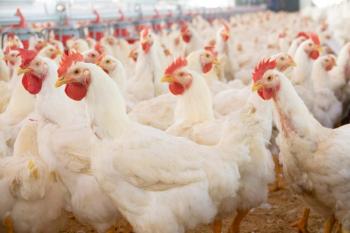
Hot Literature: Triennial rabies vaccination in Texas: What were the consequences?
A look at the rabies vaccination rates in Texas before and after triennial vaccination was allowed.
When the Texas Board of Health modified the Texas Administrative Code in 2003 to allow for triennial rabies vaccination of domestic cats and dogs, members of the veterinary community voiced serious animal health concerns. Veterinary care providers and the Texas Veterinary Medical Board were publically opposed to the change, fearing that pet owners would be confused by the new guidelines and may simply forget to vaccinate their cats and dogs. The Texas Board of Health had their own public health concerns and had not made the changes lightly. Board members had examined the results of an extended rabies vaccination interval in other states, and the vaccination rates in those states appeared to be unaffected by the change.
(DON TREMAIN/GETTY IMAGES)
To determine the consequences of introducing triennial vaccination on rabies vaccination rates in Texas, an observational study was conducted using data obtained from the Texas Department of Health's Rabies Incident Report database. The use of this data provided a random sample of animals along with their current rabies vaccination status.
Note that the Texas state code requires animals to be vaccinated with a United States Department of Agriculture-approved vaccine according to all label recommendations, including recommendations regarding vaccine interval.
STUDY DESIGN
Records from four years before (1999 to 2002) and four years after (2004 to 2007) the triennial rabies vaccination allowance were collected and compared. This included more than 7,000 dogs and 1,000 cats. Since the Texas Administrative Code requires that cats and dogs receive an initial rabies vaccine by 4 months of age and an initial booster vaccination within one year, animals under the age of 16 months were also evaluated separately to examine the vaccination rates of those animals that would still fall under an annual vaccine schedule compared with those that would have no longer required an annual booster. Data for hybrid animals and animals less than 4 months of age were excluded from the study since these animals are not required to be vaccinated for rabies under the Texas code.
RESULTS
The rabies vaccination rate for domestic dogs over the four years before the rule change (1999 to 2002) was 46%. Over that time, the year-to-year rates varied from 43% to 51%. For cats over the same time period, the vaccination rate varied more significantly from 12% to 28%, averaging 18% over the four-year period.
From 2004 to 2007, the period after the allowance of triennial rabies vaccination, the percentage of currently vaccinated domestic dogs jumped to 56%, with the year-to-year rates showing little variation: 55% to 58%. In cats over this same time period, the vaccination rates increased to 30%. The year-to-year rates remained more variable than that seen for dogs, ranging from 17% to 48%.
When the age-group analysis was performed to remove the inequality of vaccination interval requirements, it was obvious that the triennial vaccine interval did not have the negative effects on vaccination rates that many had expected. From 1999 to 2002, 49% of domestic dogs 16 months or older were vaccinated, while from 2004 to 2007, 60% of the dogs were vaccinated. The results for cats were similar, with a 20% vaccination rate before the triennial allowance and a 32% vaccination rate after the change.
CONCLUSIONS AND IMPLICATIONS
When states or territories weigh the public health safety concerns of adopting similar requirement changes, the results of this Texas study should be considered. The hypothesized decrease in rabies vaccination rates after the introduction of a triennial vaccine interval in Texas were not realized. In fact, vaccination rates appear to have improved across the board after the code change. Even among age groups in which the annual vaccination requirement was preserved, vaccination rates increased.
Since the data collected for this study involved a random selection of animals, the study findings may not be representative of the general population, and the author encourages other states and territories that allow the use of triennial rabies vaccination to conduct further studies to better characterize the effects of the extended vaccine interval on overall rabies vaccination compliance. Further investigation analyzing dog and cat owner behavior as a factor in rabies vaccination rates is also warranted.
Rogers CL. Rabies vaccination compliance following introduction of the triennial vaccination interval—the Texas experience. Zoonoses Public Health 2011;58(4):229-233.
Link to abstract:
This "Hot Literature" was provided by Avi Blake, DVM, a freelance technical editor and writer in Eudora, Kan.
Newsletter
From exam room tips to practice management insights, get trusted veterinary news delivered straight to your inbox—subscribe to dvm360.





